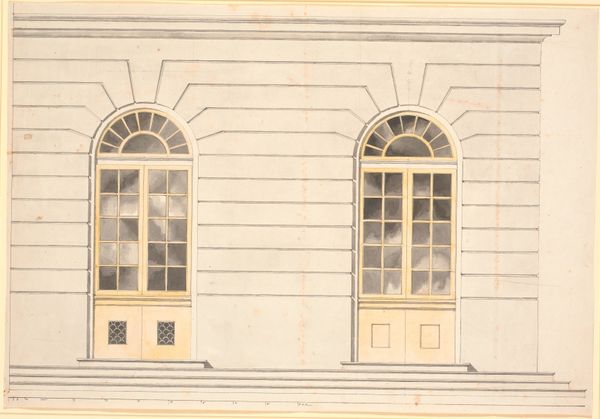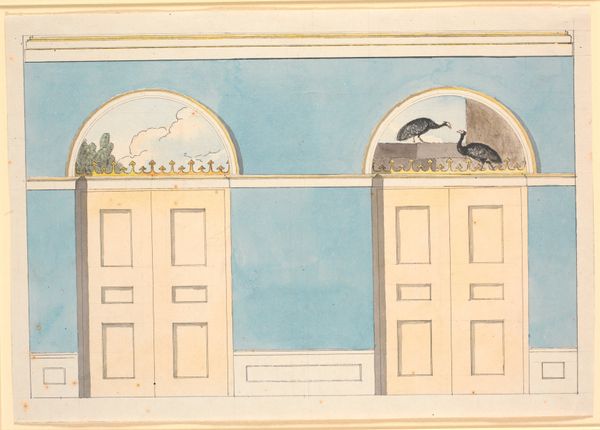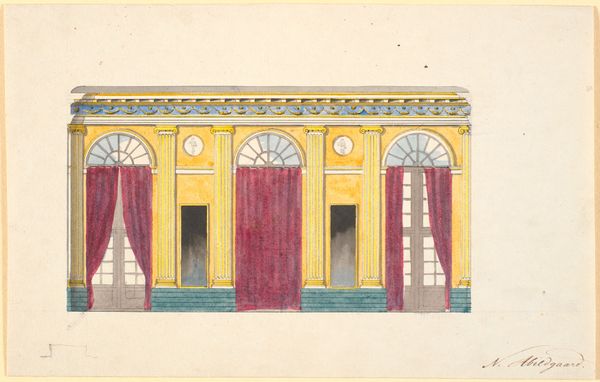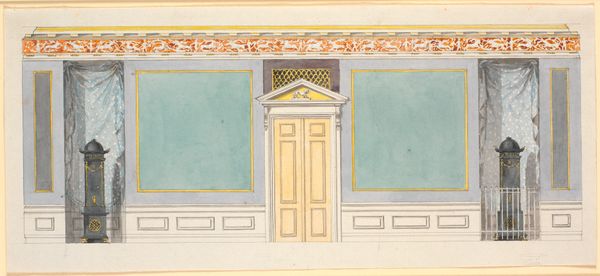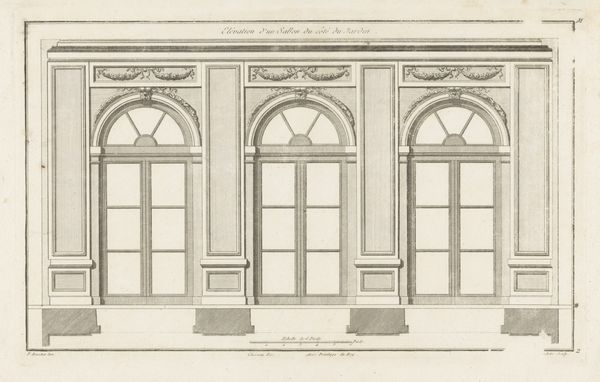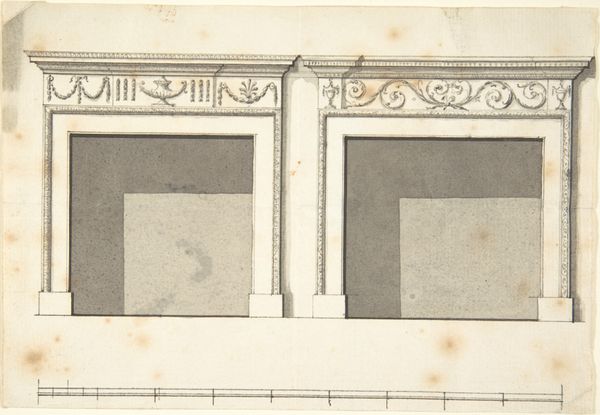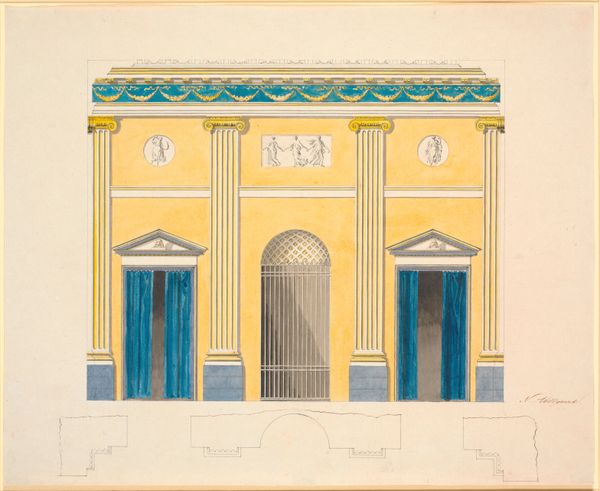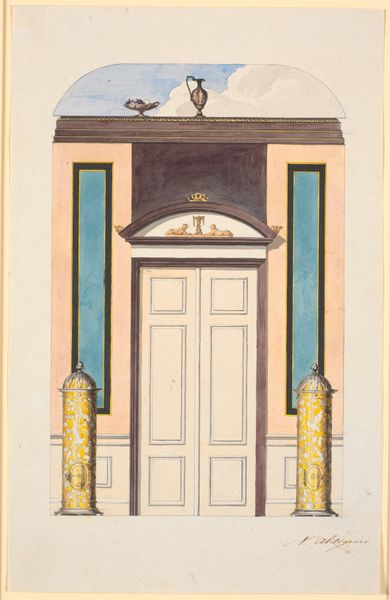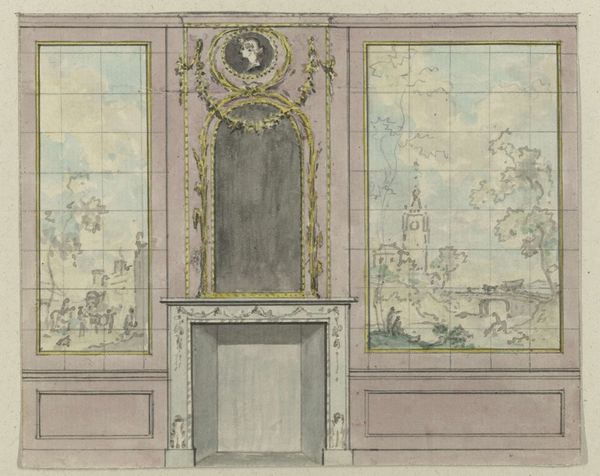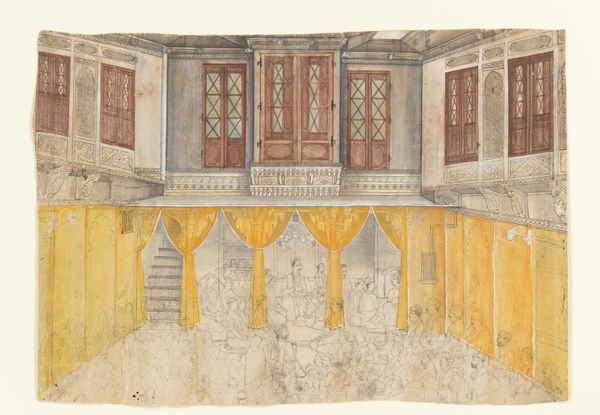
Udkast til dekoration af vinduesvæg i en sal, formodentlig i stueetagen 1743 - 1809
0:00
0:00
drawing, tempera, watercolor, architecture
#
drawing
#
neoclacissism
#
tempera
#
watercolor
#
geometric
#
watercolor
#
architecture
Dimensions: 244 mm (height) x 452 mm (width) (bladmaal)
Curator: Nicolai Abildgaard's watercolor and tempera drawing, "Udkast til dekoration af vinduesvæg i en sal, formodentlig i stueetagen" or "Draft for the decoration of a window wall in a hall, probably on the ground floor," made sometime between 1743 and 1809, presents a serene interior space. Editor: It's airy and somehow unsettlingly empty, isn't it? The light blue and precise geometry are pleasing, but that stark, dark central space makes it feel a little cold. Curator: Notice how Abildgaard employs neoclassical principles in this interior design draft. The geometric precision and balanced composition suggest a conscious effort to create a harmonious and ordered environment. It echoes the prevailing taste of the time and references classical architecture through its symmetry. Editor: Yes, the rigid structure emphasizes form. Look at how the windows are echoed by the recessed wall space. Symmetrical balance is achieved through the cool hues and measured spacing, while subtle variations of color add dimension to the walls. Do you see the brushstrokes and precise lines that together create the room’s calming aura? Curator: Precisely, although there's arguably something more profound at play than purely formal aesthetics. The drawing's value also resides in its insight into the design practices and cultural values of the period. Consider that interior design then was influenced by a complex web of economic and social considerations. This rendering allows us to understand how luxury and refinement were manifested materially for those with the means. Editor: Indeed. Focusing solely on design elements does miss that wider perspective, which brings labor and consumption into focus. Yet, if we return to Abildgaard's compositional choices, there is clearly a play with light and shadow that has a subtle emotive power—especially considering the coolness. I wonder if this contrast between light and dark resonates also symbolically, perhaps referencing the limited perspectives or obscured interior lives of the affluent during this era? Curator: Interesting interpretation, given the conventions that were in place at the time for showing status. And yes, looking closely, this draft becomes more than simply a presentation of surface details. It's an entryway to understand the deeper material and cultural construction of social order. Editor: Agreed. I appreciate how Abildgaard captured this blend of form and social narrative, it gives us a deeper and lasting way of reading the image.
Comments
No comments
Be the first to comment and join the conversation on the ultimate creative platform.
